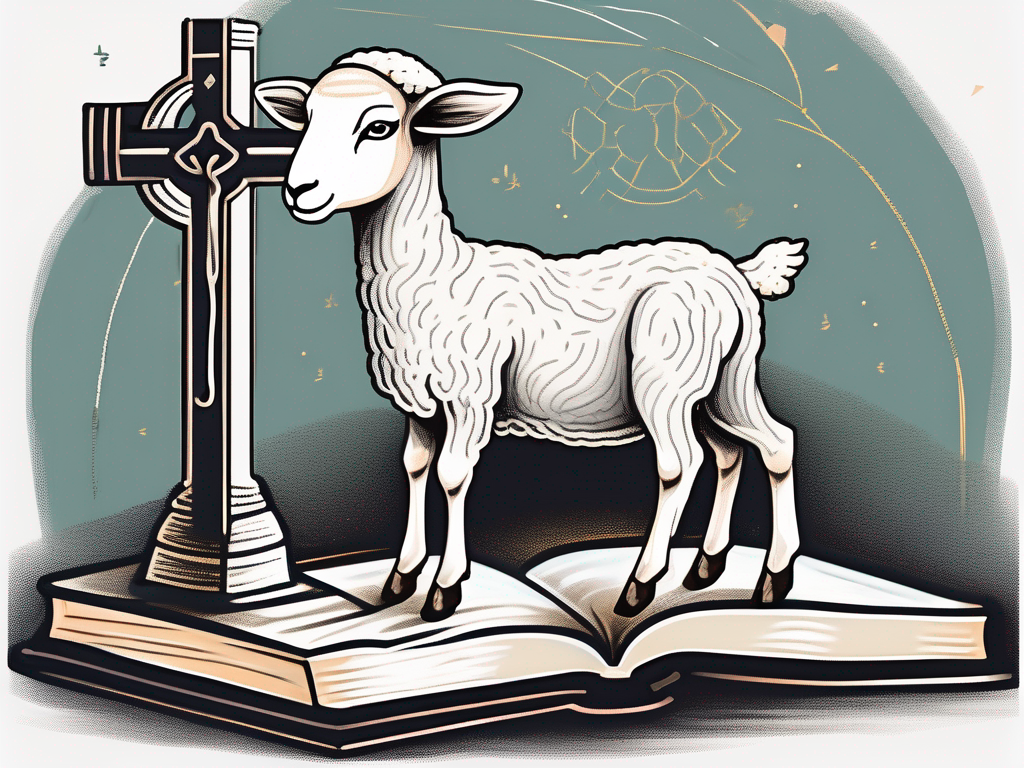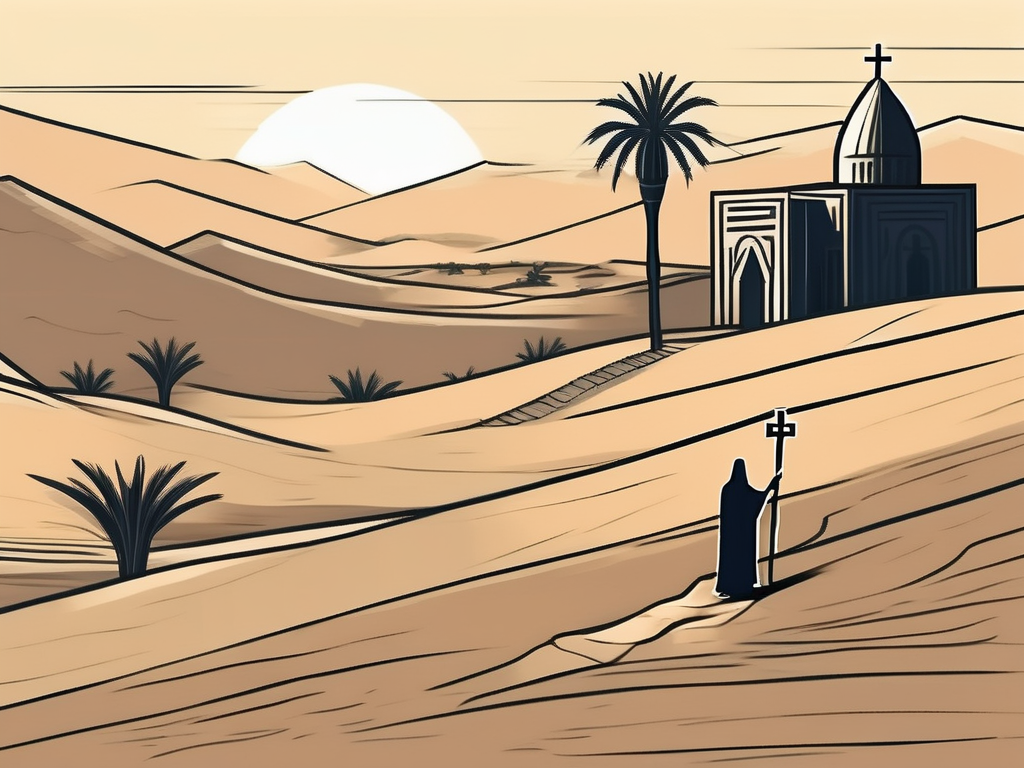Miriam holds a significant place in Jewish tradition, with her story intertwining with the narrative of the Exodus and serving as a source of inspiration for modern Jewish feminism. Let’s delve deeper into understanding the role of Miriam in Judaism, exploring her early life, significance in the Exodus, prophetic role, symbolism, impact on Jewish feminism, and her enduring influence in Jewish literature and art.
Understanding the Role of Miriam in Jewish Tradition
Miriam’s story begins with her early life and family. Born as the sister of Moses and Aaron, she played a crucial role in their lives and in the liberation of the Israelites from slavery in Egypt.
During the Exodus, Miriam’s significance shone brightly, as she led the women in joyous celebration after the crossing of the Red Sea. Her song of triumph echoed across the desert, uniting the community in gratitude and faith.
Not only was Miriam a symbol of celebration and faith, but she also took on the mantle of a prophetess. Guided by her connection with the divine, she conveyed messages and insights that provided comfort and direction to the Israelites during their arduous journey.
Miriam’s role as a prophetess was not limited to her time in the desert. Throughout her life, she continued to be a source of inspiration and guidance for the Israelites. Her wisdom and foresight were sought after by both men and women, as they recognized the depth of her spiritual connection.
One of the most notable moments in Miriam’s life was her role in the rebellion against Moses’ leadership. Alongside her brother Aaron, she challenged Moses’ authority, questioning his decisions and actions. This act of defiance showcased Miriam’s strength and determination, as she fearlessly stood up for what she believed was right.
In addition to her role as a prophetess and rebel, Miriam was also known for her musical talents. She was a skilled musician and dancer, using her artistry to express her emotions and connect with others. Her melodies and rhythms resonated with the hearts of the Israelites, bringing them closer to their spiritual roots.
Furthermore, Miriam’s impact extended beyond her immediate family. She was revered by the entire community, with people from all walks of life seeking her counsel and blessings. Her presence brought a sense of unity and harmony, fostering a strong bond among the Israelites.
As the years went by, Miriam’s legacy continued to grow. Her name became synonymous with strength, wisdom, and devotion. Her story was passed down through generations, inspiring countless individuals to embrace their own unique gifts and to stand up for justice and righteousness.
In conclusion, Miriam’s role in Jewish tradition goes far beyond being the sister of Moses and Aaron. She was a leader, a prophetess, a rebel, and a musician. Her life and actions serve as a reminder of the power of faith, celebration, and the pursuit of justice. Miriam’s story continues to inspire and guide individuals on their own spiritual journeys, reminding them of the importance of embracing their true selves and making a positive impact on the world.
The Symbolism of Miriam in Judaism
One remarkable symbol associated with Miriam is the well that accompanied the Israelites in the desert. This well, referred to as “Miriam’s Well,” represented sustenance and life-giving water in the parched wilderness. It symbolized the nurturing and sustaining power of Miriam and her role as a caretaker of her people.
As the Israelites wandered through the harsh desert, the presence of Miriam’s Well provided them with a source of hope and comfort. The well’s life-giving water not only quenched their physical thirst but also served as a reminder of Miriam’s unwavering dedication to her people. It symbolized her ability to provide nourishment and support, even in the most challenging of circumstances.
Moreover, Miriam’s Well held a deeper spiritual significance. It represented the divine presence and providence that guided the Israelites throughout their journey. Just as the well miraculously appeared to sustain the Israelites, it symbolized the belief in a higher power that would always provide for their needs.
Miriam’s Song holds another deep symbolism in Judaism. It not only signifies celebration and gratitude for liberation, but it also embodies the strength and resilience of the Jewish people. This song remains a powerful reminder of the power of music and communal rejoicing.
When Miriam led the women in song and dance after the miraculous crossing of the Red Sea, it was a moment of immense joy and gratitude. The song served as an expression of liberation from slavery and a testament to the unwavering faith of the Jewish people. It symbolized the triumph of the human spirit over adversity and the ability to find solace and strength through collective celebration.
Furthermore, Miriam’s Song highlighted the integral role of women in Jewish history and their contributions to the community. Miriam’s leadership and artistic expression demonstrated the importance of women’s voices and their ability to inspire and uplift others.
However, Miriam’s story also includes a moment of hardship, specifically when she was struck with leprosy after speaking against Moses. This incident highlights the theme of punishment and redemption, portraying Miriam’s journey from a place of error to eventual forgiveness and restoration.
Miriam’s temporary affliction with leprosy served as a lesson in humility and the consequences of speaking ill of others. It emphasized the importance of respectful communication and the need to recognize the inherent worth and dignity of every individual.
Yet, Miriam’s story does not end with her punishment. Through her sincere repentance and the intercession of Moses, Miriam was ultimately healed and reinstated to her position of honor within the community. This narrative of redemption and forgiveness serves as a reminder of the capacity for growth and transformation within each individual.
In conclusion, Miriam’s symbolism in Judaism encompasses various aspects, from her role as a provider of sustenance and life-giving water to her leadership in song and dance, and her journey of punishment and redemption. Her story serves as an inspiration for the Jewish people, reminding them of the power of faith, resilience, and the potential for personal growth. Miriam’s legacy continues to resonate within the Jewish community, symbolizing the strength and enduring spirit of the Jewish people throughout history.
Miriam’s Impact on Jewish Feminism
Miriam’s character serves as a role model for Jewish women throughout history. Her leadership, strength, and independence inspire women to break down societal barriers and embrace their own potential.
In modern Jewish feminism, Miriam is celebrated as a trailblazer, embodying the power of women’s voices and their contribution to spiritual and social change. Her courage and resilience continue to motivate Jewish women to advocate for equality and justice.
Miriam’s impact on Jewish feminism extends beyond her role as a biblical figure. Her story resonates with contemporary Jewish women who face similar challenges and struggles. By examining Miriam’s life, Jewish feminists find inspiration and guidance in navigating the complexities of their own journeys.
One of the key aspects of Miriam’s character that resonates with Jewish feminists is her unwavering commitment to her beliefs. Despite the obstacles she faced, Miriam remained steadfast in her pursuit of justice and liberation. This unwavering dedication serves as a powerful reminder for Jewish women today to stay true to their values and fight for what they believe in.
Miriam’s leadership qualities also play a significant role in her impact on Jewish feminism. As the sister of Moses, she played a pivotal role in the liberation of the Israelites from slavery in Egypt. Miriam’s ability to rally and inspire her community showcases the strength and influence that women possess in effecting change.
Furthermore, Miriam’s independence and assertiveness challenge traditional gender roles within Judaism. Her willingness to speak up and challenge authority demonstrates the importance of women’s voices in shaping Jewish history and theology. Jewish feminists draw strength from Miriam’s example, encouraging them to assert themselves and challenge patriarchal norms within their own communities.
In addition to her leadership and independence, Miriam’s creativity and artistic expression are celebrated by Jewish feminists. Miriam is famously known for leading the Israelite women in song and dance after crossing the Red Sea. This act of artistic expression not only served as a form of celebration but also as a means of reclaiming their identity and agency.
Jewish feminists see Miriam’s creative expression as a powerful tool for self-discovery and empowerment. Through art, Jewish women can explore their own narratives, challenge societal expectations, and reclaim their voices. Miriam’s legacy encourages Jewish feminists to embrace their creativity and use it as a means of resistance and liberation.
In conclusion, Miriam’s impact on Jewish feminism is profound and far-reaching. Her leadership, strength, independence, and creativity continue to inspire and empower Jewish women to challenge societal norms, advocate for equality, and embrace their own potential. Miriam’s story serves as a reminder that women have always played a vital role in Jewish history and theology, and their voices are essential in shaping a more inclusive and just future.
The Legacy of Miriam in Jewish Literature and Art
Miriam’s story has been depicted and celebrated in various forms of Jewish literature. Her character is often explored in midrashim and other ancient texts, shedding light on her deep emotional journey and her multifaceted role in the liberation of the Israelites.
In art, Miriam is a commonly represented figure. Paintings, sculptures, and other artistic forms capture her joy, determination, and the significance of her actions. These visual representations bring Miriam’s story to life and make her enduring influence palpable.
Conclusion: The Enduring Influence of Miriam in Judaism
Miriam’s presence in Jewish tradition is not merely a historical account, but a reflection of the values and teachings that continue to shape Jewish life. Her story resonates with believers and acts as a reminder of the power of celebration, faith, and female empowerment. From her early life to her role in the Exodus, Miriam’s influence remains a guiding light for individuals seeking inspiration within the Jewish faith.












